#piris icons
Explore tagged Tumblr posts
Text






My Hermano is always shy with you all ┐(‘~`;)┌
Please delete that
Nah
#I've noticed I draw this man blushing too much#icons#2p philippines#hetalia#hws philippines#ask-the-pearloftheorient#Piri arts
21 notes
·
View notes
Text
Dreamcatcher Title Track Finale ✨️
These are the top 2 from each poll for the final vote, as suggested by anon.
#dreamcatcher#kpop#insomia#dami#gahyeon#handong#kpop icons#siyeon#sua#yoohyeon#polls#song polls#kpop polls#my polls#deja vu#PIRI#Scream#Odd Eye#BEcause#BONVOYAGE
15 notes
·
View notes
Note
Do you take requests? If so can you illustrate Piri dressed in Jolibee's red suit and chef hat since Jolibee is his iconic fast food. Maybe even add America dressed as Ronald Mcdonald and when Piri saw him he started dying at how hilarious he looks.
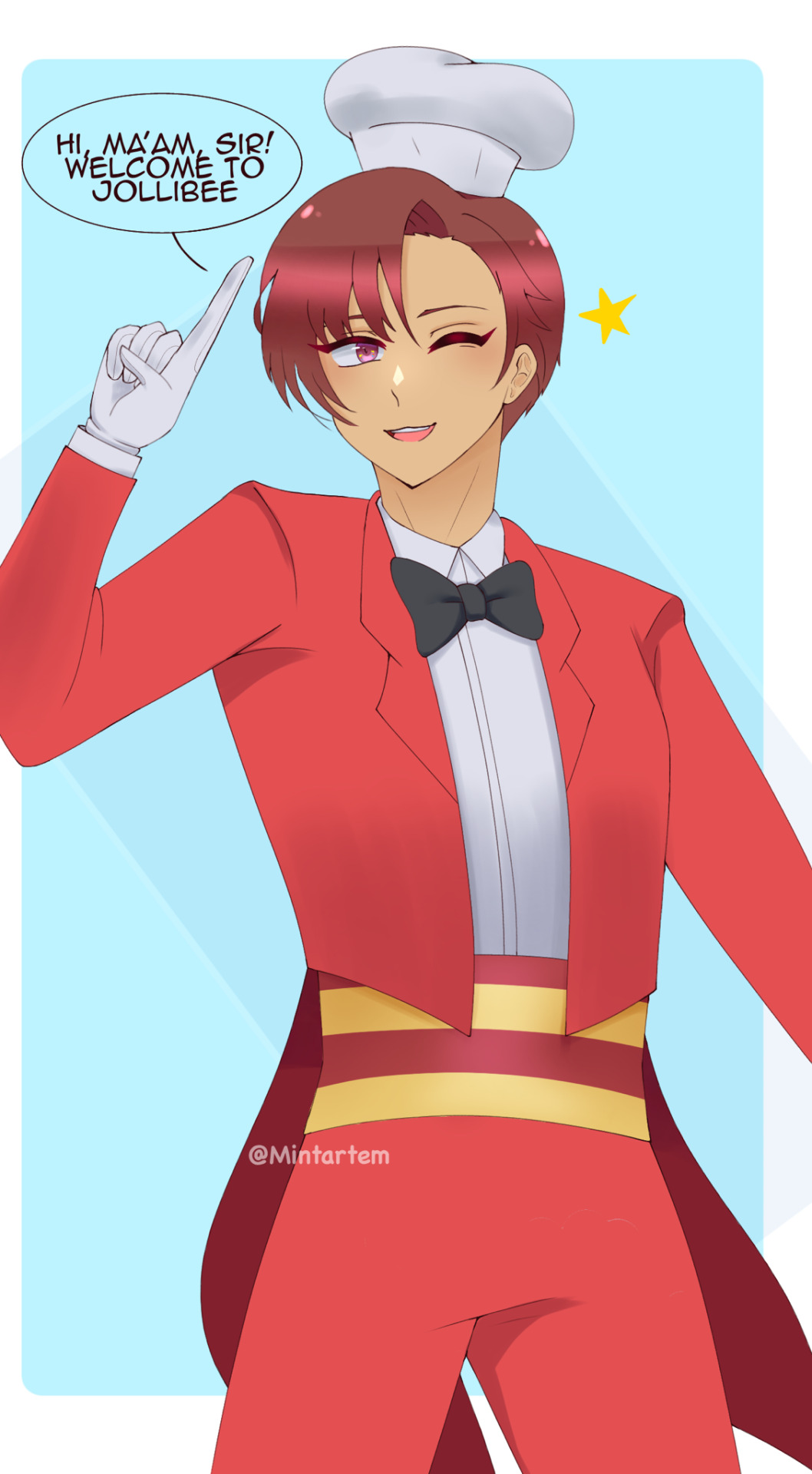
This has been in my Ask box for a long time now. I didn’t answer back then because I wasn’t taking requests. Now though, I decided to finally do it considering it fits the month (October). I know you asked for an illustration but I don’t make fully rendered illustration requests. Simple shading for requests is what I’ll do at best. Sorry!
Bonus:

#hetalia#hws philippines#aph philippines#ask#anon ask#hetalia philippines#hws america#aph america#alfred f jones#mintartem art
63 notes
·
View notes
Text



January 23rd is National Pie day, what's your favourite pie?
Is it the traditional New Years day fare, of a muckle steak pie, or the humble Scotch Pie filled with mutton? It could also be a macaroni pie, possibly a favourite with the vegetarians Scots out there. Or maybe you have sought out the Breakfast pie that I posted about previously is made by Table 13 Express takeaway deli in Kirkintilloch. The Haggis and Steak Pie by Bells is also up there, although I preferred the haggis mash and beans pies we used to get from our local bakers growing up in my hometown of Loanhead.
Perhaps the most famous of our pies here in Scotland is the award winning Killie Pie made by Brownings Bakery in the town since 1945.
Just last week Scotlans best pie was announced at The World Championship Scotch Pie Awards, with a beloved Perth and Kinross butcher taking home the top prize at the ceremony. More than 50 bakeries and butchers from around Scotland were shortlisted in a range of categories, with their bakes assessed anonymously by a panel of experts and independent judges.
This year, the top World Champion prize was given to James Pirie & Son of Blairgowrie, who previously won the competition in 2018, 2020, and 2022, as well as taking the title of World Scotch Pie Champion of Champions in 2021 with their iconic Scotch Pie.
Elsewhere, fellow winners included James Aitken Butchers in Alloa, The Little Bakery in Dumfries, and Beefcake Cafe in Glasgow, who took home prizes in the Sausage Roll, Bridie, and Vegetarian Savoury categories respectively. Among the other categories were Steak Pie and Haggis Savoury, which were awarded to Brownings the Bakers Ltd in Kilmarnock and WeeCOOK in Carnoustie.
Here's a recipe for the Scotch Pie, although they will differ from source to source.
EQUIPMENT NEEDED TO MAKE THIS RECIPE
Four 4-inch springform cake pans (or equivalent)
Rolling pin
Small skillet
Knife to cut onion
Saucepan/s
Measuring cups, spoons
Kitchen scale (optional)
Mixing Bowls and spoons
Pastry Brush (for egg wash)
Stove and Oven (obviously)
INGREDIENTS
Hot Water Pastry Crust
2 cups flour (240 grams)
1/2 cup lard or shortening
1/2 cup water
1/2 teaspoon salt
1 egg yolk, beaten (for egg wash)
Meat Filling
1 small onion, chopped fine
1 – 2 teaspoons lard, butter, or shortening
1 pound lean ground beef
1 teaspoon kosher salt
1/2 teaspoon pepper
1/2 teaspoon mace
1/2 teaspoon nutmeg
1 teaspoon Italian spice (optional)
Quick Beef Gravy
1 14 oz. can low sodium chicken broth
2 cubes beef bouillon
1/4 cup cold water
2 tablespoons corn starch
2 tablespoons corn starch
DIRECTIONS
Preheat oven to 350° F or 177° C. Grease four 4 inch springform pans and set aside.
Put flour in a medium mixing bowl and create a well in the center.
Place water, salt, and lard in a saucepan and bring to a boil.
Carefully pour hot water and lard into well made in the flour. Mix with a spoon until all the flour is wet.
When the flour mixture is cool enough to handle. Knead just enough to mix completely. Set aside one fourth of the dough and divide the remaining dough into four balls.
2 tablespoons corn starch
DIRECTIONS
Preheat oven to 350° F or 177° C. Grease four 4 inch springform pans and set aside.
Put flour in a medium mixing bowl and create a well in the center.
Place water, salt, and lard in a saucepan and bring to a boil.
Carefully pour hot water and lard into well made in the flour. Mix with a spoon until all the flour is wet.
When the flour mixture is cool enough to handle. Knead just enough to mix completely. Set aside one fourth of the dough and divide the remaining dough into four balls.
Place all of the dough in the refrigerator while sautéing the onions and preparing the meat mixture.
Sauté the chopped onion in 1 to 2 teaspoons of lard, butter, or shortening, until soft.
Thoroughly mix ground beef, onion, and spices, including salt and pepper, in a bowl and set aside.
Remove dough from the refrigerator and roll each of the four big dough balls into round shapes big enough to cover the bottom and up the sides of the springform pans stopping about 1/4 inch or 6 mm from the top of the pan.
Roll out the large piece of dough, (the fourth you cut off from the whole dough mass in the beginning), into one large shape a little thinner than the bottom shells. Using one of the springform pans, cut four circles out of the rolled dough. These will be the lids (top crusts) of your pies. Lay them flat and cut a small hole in the center of each lid.
Add one fourth of the meat mixture to each pastry lined pan. Filling to about 1/4 inch or 6 mm from the top of the dough. Be sure to push it down into the corner round the bottom of the pan.
Cover the pie with the pastry lids and press the edges of the lid dough into the shell dough to seal. You may crimp with your fingers or press with a fork to make them pretty or just leave them plain. Just make sure the tops and sides are sealed together.
Brush each lid with the beaten egg yolk and place the pies in the oven for 35 to 40 minutes. You can stick a meat thermometer into the lid hole to ensure the meat is cooked through. It should be 160° F or 71° C.
While the pies are in the oven, make the quick gravy. Put the chicken broth in a saucepan along with two beef bouillon cubes and bring to a boil. Mix 2 tablespoons of corn starch into 1/4 cup cold water and stir until smooth. Slowly, add the corn starch mixture to the broth while stirring. Turn down the heat to a simmer and allow the gravy to thicken, stirring occasionally.
Remove the pies from the oven and allow to cool for 5 to 10 minutes before removing springforms. Serve with gravy, potatoes, and vegetables, top with beans, or, just eat them on the go.
NOTES
If you want to put a tablespoon of gravy inside each pie before baking them, just make the gravy before assembling the pies.
Scotch pies will last 3 days in the refrigerator and can be frozen after they have cooled for an hour. They will taste best if eaten within two to three months of freezing. Once you have thawed the pies, don’t refreeze them.
Recipe taken from https://travelinginmykitchen.com/2022/01/03/make-your-own-scotch-pies/
41 notes
·
View notes
Text
State Street, That Great Street: We Know About The Past, But What About The Future?
youtube
I just hope this post finds you, period.
If you're well, I'm glad.
If you're struggling, I wish you the best.
If you're cold, I hope you find warmth.
Chicago's State Street is an intoxicating place for me, full of memories from my younger days and my not-so-younger days. It's the older brother/sister/mother/father/sister-in-law to the tonier Michigan Avenue and for me, it is also the home to one of my favorite non-public bathrooms in the city (hi Palmer House!) and the Chicago Public Library, where I've spent countless hours researching, writing, and from time to time, sleeping.
A lot has changed in the thirty plus years that I've had a personal relationship with this retail corridor: the State Street pedestrian mall has been unpedestrianized, the Woolworth's where I bought a pet for my dorm room is long gone, and by the time you read this missive, the last department store (Macy-Field's) on That Great Street might be a pleasant memory, stripped of its clothes racks and stunning jewellery counters.
Retail corridors are in a constant state of upheaval and online shopping and the mercurial shopping habits of the American consumer are as fickle as a teenager's popular music tastes (hey, I was that teenager, so watch out!)
While we didn't profile it in this particular program, one of the newest arrivals on State Street is the Medieval Torture Museum (Tagline: "our product is emotion"----what?), gently tucked next to the Chicago Theatre and a Chick-Fil-A that used to be home to an off-track betting parlor where I once met a man who claimed to be Al Capone's son (he wasn't)
I have not paid the $39.97 to enter this 6,000 square foot chamber of horrors, but this physical manifestation of torture porn(ography) seems to recall another period in State Street history when there were dime museums, bump n' grind burlesque theaters, and adult bookstores scattered throughout the 300 and 400 blocks of south State Street.
There have been some other remarkable changes since we shot this program as well. One that sticks out to me is the complete closure of Pritzker Park directly north of the Chicago Public Library. Sure, this tiny bit of green and poured concrete wasn't a great public space, but it was one of State Street's only public outdoor spaces---perhaps the only one.
Honestly, I just wish you could buy a hot dog from a cart on State Street----something about that just feels so iconically Chicago.
That hasn't been possible since 1996 when the pedestrian mall went away, alas.
Of course you could just go to the "goth" Target (nee Carson Pirie Scott), buy a mini-grill, get some Vienna Beef(s) and set up shop AL FRESCO style at State and Madison.
Voila---your very own hot dog stand.
5 notes
·
View notes
Text
Video 📹
Outlander Executive Producer Maril Davis Breaks Down Season 7 Mid-Season Finale & Teases a Big Controversial Moment Next Year
Seven years in, audiences can’t get enough of the love, pain, war, heartbreak, drama, trauma, time-travel that Outlander delivers. The mid-season finale of Outlander surprisingly left Jamie and Claire smiling and arriving in Scotland! Jamie and Claire, happy? What? Is this Outlander? Yes, it is. And in its seventh season, it’s stronger than ever. Executive Producer Maril Davis exclusively sat down with SheKnows to break down that exciting mid-season finale, talk about the second half of season 7 which will air sometime in 2024, and even gave a few hints about season 8, the final season of this epic show, which went from the thousands of pages of Diana Gabaldon’s book series to television screens across the world. Davis also reveals her favorite moments in season 7 for both Sam Heughan and Caitríona Balfe. She discusses her favorite Jamie and Claire scenes, explains why one of their signature love scenes from the book couldn’t make it in this season, but teases that there’s plenty of intimacy next year, but also “tragedy.” In Austin at the ATX Festival in June, Davis and Balfe revealed Balfe would be directing a full episode for the first time in season 8. And when will that be exactly? Davis lets us in on that tidbit, along with a few other bits about Jamie and Claire’s love scenes, and why she’s excited for next year. And finally, she hints that there is a controversial scene that fans will see in the second half of season 7, involving Claire and not Jamie. Uh oh. Brace yourselves. Watch the video for the full chat.
Davis sat down with us on the 9-year anniversary of when Outlander first aired on Starz. “It is kind of hard to believe it’s been 9 years, it feels like yesterday we just (kind of started),” she admits. There was no better day to break down the mid-season finale and talk about the future of Outlander, but also the end, than the anniversary of the long-running hit show.

Starz / Robert Wilson
First up, Davis broke down the memorable Claire Fraser sword scene and pretty much confirmed Balfe is actually a bonnie wee swordsman. “She wields that pretty well, huh? I’m like, ‘Have you done this before?’” Davis recalls, “somehow that sword disappeared, I wonder where it is now?” She shed a little light on what it was like shooting the legendary sword scene, revealing that in the book it’s “quite a long scene!” “Certainly, there were discussions early on, could we cut that scene down a little bit, but we all decided, you know what, it was so iconic, and it’s such a powerful Jamie-Claire scene. You know I love that dynamic between them, that she basically wants to kill him, because he was almost killed. That is the Jamie and Claire.” Simply put, “That is quintessential Jamie and Claire, quintessential Sam and Caitríona. And I think they always have fun doing those scenes too. You know the back and forth… I love it.”
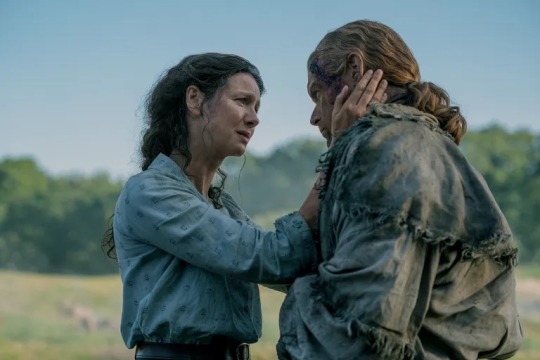
Starz / Robert Wilson
Season 7 compiles parts of books 6, 7, and 8, so it’s a lot to take on. Does Davis feel sad as a book reader about any story they couldn’t fit in. “Honestly, there’s a Marsali-Fergus storyline that we didn’t use, because Lauren (Lyle) had her other other show (Karen Pirie), and César (Domboy) was busy, and we just kind of decided in previous seasons we weren’t using them as much as we could. Also, there’s a Denzell storyline with a character named Dottie that we didn’t fit in, that I wish we would have, but it was such a big season, and there was so much material to fit in… As a whole, I loved this season.”

Starz / Robert Wilson
Although Davis loved the first half of season 7, she says she’s most excited for the audience to see the second half, “because it gets even crazier.” With the SAG-AFTRA strike happening, none of the actors have been able to chat about the show and all their amazing work this season, so we asked Davis what her favorite scenes for Heughan and Balfe were. She confesses she loved when Heughan was sitting in the dark waiting to confront (ahem, murder) Richard Brown (who deserved it). In the mid-season finale, “Turning Points,” Davis says, “I loved when he sees William across the enemy lines and he almost shoots him… And that kind of look of realization on Jamie/Sam’s face, I think it’s so powerful. It’s such a great season for him. He’s done an amazing job.” Davis can’t help but list all the scenes she loved Heughan in thus far, but teases he’s got great things coming in part 2 of season 7.

Starz / Robert Wilson
As for Balfe, like Heughan, Davis can’t just name one scene she loved. So, she names many. “I really do love the scene with Claire and Jamie, third or fourth episode, I mean I love her stuff with Tom Christie, both on the ship but also at the tavern was so amazing. But also, I love their (Jamie and Claire’s) love scene after that. Oh god, she’s had so many great ones too! I do love the sword scene, too. I love how she rips into Jamie… and is kind of so angry, because she was so scared. Caitríona always does that so well.”

Starz / Robert Wilson
As for Jamie and Claire love scenes, Davis chats about one of the love scenes that didn’t make it in the show. For those wondering if it was a question of timing or if it was difficult to translate that book scene to the screen, Davis says, “It was a combo. We just didn’t have, kind of, the set up that was described in the book is not the one that we had found. Wasn’t anywhere to really do that. Story-wise, it just didn’t fit this time. It’s always hard – listen, we’re not going to ignore the fact that we know obviously fans would want that scene, and we would want to do it too, it’s just hard to fit it in.” Davis continues to explain how the story might work well in the book, but then having to compress scenes in the show, “Sometimes in the book, it works out better those times in the book during war, like when Jamie’s like, ‘I have to have you,’ and Claire’s like, ‘I have to have you,” and you’re in the middle of some battle sequence… quite honestly, the transition on the screen is not as easy. In terms of the writing of something like that, and for the actors also, their justification of it too as well.” Fair point, it would be a little strange for Jamie and Claire stop the war to have sex. Or would it be the most brilliant way of stopping a war. You decide. Make love not war as they say. Is that where that saying came from? From Jamie and Claire ending wars with sex in the past?
But fear not, Davis assures everyone that there are “a few iconic scenes coming up in the second half, that if you’re a book fan that you’ll know and love, there’s some tragedy, but there’s also some lights at the end of the tunnel, and perhaps iconic scenes that are coming for Jamie and Claire, that I think book fans are waiting for. They know what they are. Wink, wink.” And Davis actually winks. So, she means it. She continues, “So, they’re coming. And also, some things I think fans aren’t looking forward to but still were essential to the book to do. And we did them!” Book readers will know what Davis is hinting about. And if we can play detective… Balfe also hinted at something coming down the pike with Claire and two men. The first already happened with Tom Christie. And separately, David Berry hinted that things get complicated for Jamie, Claire and Lord John. So, we asked Davis how they might have handled it, and she confesses, “I think it’s hopefully satisfying for the people who love that, and for the people who don’t love that!” Her answer only leads us to more questions! “Lots of wink winks going on,” she evilly laughs.
With the actors’ and WGA strikes happening, preparations for Outlander season 8 understandably have had to pause, but Davis let us in on what had been planned already. Balfe and Davis had announced at the beginning of the season that Balfe would have her directorial debut. Davis says they know which episode she’s doing, “We do know, she’s going to be first up, she’s not doing the first episode, but she’s going to be first up. Because the only we can pull off her directing is if she preps the first block, and that’s not to say she’s doing on in the first block, because sometimes we mix blocks around, but it’s the only way she can prep.” Davis goes on to explain for Balfe, who’s in the show so much, as director she’ll need about 5 weeks to prep. Doing it first will give Balfe plenty of time to prep.
youtube
As for scripts being broken down, and if everyone had read book 9, Davis says that season 8 will primarily be book 9 with some other stuff throw in. “Season 7 combines a dash of 6 and 7 and 8.” So how far did they get before the strike? She says, “We were in the room, so certainly some of the season is broken, we don’t have the end yet though.” Terrific, maybe that means Outlander will never end. Wink, wink?
Since the Droughtlander has begun and is going to be another long one, what can Davis leave us with? At the beginning of the season, she gave us one of her signature “heard on set” lines. She says she will look for one later to tease the next block of season 7! But leaves us with this, “I honestly think the second half is crazier than the first… William, Jamie, Claire, John – John Bell! Young Ian, everyone is going to have a real rollercoaster in the second half, and face kind of their worse fears. And… some come out of it okay, and some do not.” What?! She laughs, “Take from that what you want.” What we’ll take from that is months of stress. Thank you, Maril Davis. Wink, wink, wink. All the winks to you.
As for the exclusive Maril #HeardonSet line, you’ll just have to wait until she comes across it on her phone. As Claire Fraser would say, we’ve got time. Okay, fine, she’d probably say it more British, “We’ve got bloody time.” It’s true, there’s plenty of time to re-watch the first 8 episodes of season 7. And to be honest, you can probably re-watch all of Outlander, read all of Diana Gabaldon’s books, and all of our recaps. Before you know it, the drought will be over, and hopefully the strikes will be too (with writers and artists being fairly compensated for their amazing work), and all of a sudden, you’ll turn on your TV, and there Jamie and Claire will be having all the fun in Scotland with no stress or bad things happening at all. Wink, wink.
She Knows
Remember… Caitríona’s prep for directing a Season 8 episode will begin five weeks before the season’s filming starts. As an actor, she’s required on set during filming, so regardless of which episode she directs, she’ll do her prep before any episode is filmed.
#Tait rhymes with hat#Good times#Outlander#Season 7#She Knows#16 August 2023#YouTube#My screenrecording#Thanks castlemaine123#Thanks sunsetmagic85
54 notes
·
View notes
Text
heyy you already know what it is! let's talk about the korean underground speed rapper and screamo/hyperpop artist and iconic fuckass weeb called PIRI who literally doesn't have a single music video that isn't an anime amv that he's commissioned. and they all fuck as hell
i like this one especially because it looks like the vampire is the one rapping in the beginning and i think it'd be fun if dracula was a soundcloud rapper. also it fits this blog because this guy fucking loves demons and blood and gore so much.
his discography includes incredible songs like "Cannibalism Freestyle" and just straight up "Gore". also "Whoever Fights Monsters Should See to It That in the Process He Does Not Become a Monster." like okay fall out boy
#also this is by no means even close to my favourite song by him. i just think the animation fucks as hell like omg#i especially like the centipede animation there on the floor and the splashings. very nice
11 notes
·
View notes
Note
Saw this on TikTok, thought you'd find it mildly interesting. https://vm.tiktok.com/ZGJvpDMqN/
A few things:
Sangria is 17€ everywhere in downtown Lisbon. 5€ is the glass. A jar of sangria is not going to be much cheaper than 17€ anywhere in Lisbon. I don't know who the fuck sees "sangria 5€" and expects that to be the price of a full one litre jar
I'm very positive I've seen those guys every other day. I walk that street almost every day, I have a stop there on the food tour and also there's a café there I often go to. It's a pretty chill street overall, but those dudes, if they are who I am remembering, they're those guys who are usually standing there trying to sell drugs that aren't really drugs. Now Imma be honest with you. I've dealt with them very often, for several years. Never, not once, had a problem. Yeah they're loud and a little annoying with the hustle, but when I was working near that street selling touristic services and they were next to me selling fake weed lmao they even defended us at some point.
I'm not saying everything described in the video did not happen. Likely it did. I said that street is very chill, but if you watch the vid you'll see in the background a building with flags and then a purple light. that building with flags is the Coliseum, the local concert hall. Which means this couple is officially on the wrong part of the street. Portas de Santo Antão, the street in question, is fine right before you get to that part, overall.
When travelling nobody has the mindset to just google every restaurant and check reviews, but keep in mind this is going to be a possibility. Lisbon is very, very popular right now as a tourist destination, and we Lisboners have known FOR YEARS about a lot of these restaurants functioning on the basis of scams. Portas de Santo Antão, again, is usually chill, but not always. Personally the way I deal with it is just pay for my shit and move along, cause you're in a foreign country and it's not worth the shitshow. You don't know what's going to happen, you don't know the country's laws, so just accept that you made a mistake. It happens often.
What this means is that Lisbon has become a city that requires thorough research before you sit your ass in a restaurant. Even for me, bro.
If the restaurant has people aggressively trying to get you to come inside and sit, avoid it. Granted that not all are going to be like this, and I can tell a couple ones in downtown that are chill, it's just the dudes are paid to do that ungrateful job. But there's Critical Zones
With that in mind, when eating lunch or dinner stay away from:
The upper part of Portas de Santo Antão
Rua dos Correeiros, for the love of god stay tf away from this one. The chances here of paying 500€ for a salmon are not zero. Loads of restaurants here are actually run by the biggest pickpocketer in Lisbon. THis is not a joke, it was on fucking TV
Rua Augusta although this one is fine for breakfast and sweets to be honest.
Trust:
Rua dos Sapateiros (some of the oldest and most trustworthy and iconic restaurants in downtown are here)
Rua do Ouro for quick snakcs but nothing too traditional
Lower part of Portas de Santo Antão, namely Casa do Alentejo
Rua do Jardim do Regedor, namely, Bonjardim which is one of the oldest places and most trustworthy for piri piri chicken
Rua da Madalena. 100% nothing there is bad. Literally nothing I am not exagerating, best bifanas in Lisbon and some of the coollest wine bars too.
43 notes
·
View notes
Text

Mahal
Alt with no effects:

#Aph Brunei#Piri arts#hetalia brunei#heta stage#hetalia#bruphil#ask-the-pearloftheorient#hetalia ocs#Color pick the splatter and other heta stage icons I dare you
12 notes
·
View notes
Text

As the saying goes, "the personal is political." I think it perfectly encapsulates the meaning of "kasarian" from below the surface.
SOGIESC* Headcanons for HWS Philippines
CW: mature language, mentions of hate violence
*Sexual Orientation + Gender Identity & Expression + Sex Characteristics
If SOGIESC was a new term for you, don't worry, it was relatively new to me as well! SOGIE as an acronym was already cemented into the PH-based lexicon, much of it thanks in part to what would evolve to become the SOGIE Equality Bill. The inclusion of SC I first encountered in my copy of an anthology of PH queer studies (which I opened at last to write this very post out of spite). In retrospect, the intersectionality of the LGBTQIA+ movement and feminism was undeniable.
I intended to solely write on my gender identity & expression (GIE) headcanon for Piri, but further reading led me to realize that within a Philippine context, it was interchangeable with sexual orientation (SO) — and to a degree, sex characteristics (SC). In addition, I did not intend to challenge Western notions of queer theory & its spectrum of labels, only that the framework they provided simply did not fit neatly for the postcolonial conditions that shaped the framework within which the Philippines is situated.
In layman's terms — bakla, gay, and bisexual were all situated within the same spectrum, even if by all Western definitions they should not. It's very messy! But hey, it lived up to the dictionary definition of "queer" (though it must be reiterated that queer as strange/odd/peculiar started out as a pejorative).
All that being said, we would have to temporarily set aside our Western understandings, if not completely unpack and let go altogether, in order to accomplish meaningful PH queer studies. I'm also going to admit that this ended up being so hard to explain in English.
☼ ☼ ☼
Speaking of unpacking!

Not me unironically using this iconic GIF of MCU Captain America, of all people!
This should have been a GIE headcanon post but it became more than that. I never felt the need to back my thoughts with academic jargon because, at the end of the day, an individual's gender identity was to be accepted, because the opposite choice was dehumanizing.
But far too often I would swim around the Piri tags only to come out shaking my head in disbelief at the implied iron grip on the gender binary. I understood and wholeheartedly accepted that this was the mere product of our conservative educational upbringing that aimed to uphold a certain image of an ideal society, which, unfortunately, included normalizing the concept of the gender binary. (Cue me side-eyeing my own alma mater.)
It must be understood that it was that very social environment that shaped the characterizations of the fem!Piri OC lore of yore. I entered the fandom in a different creative circle and was not as invested in fanfics (BECAUSE I WAS BORING FOR CARING TOO MUCH ABOUT MY STUDIES) and roleplaying. I could certainly vouch, however, that none of us had the depth of gender discourse that the high-school teenagers of today had.
In fact, much of (Western) queer theory was developed in the 90s — smack when we were born! Aside from the sorely obvious fact that none of us would be capable yet of comprehending such information, it was discourse deemed a threat to the sacred and predominant power structure that was the Roman Catholic Church. Believe me when I say their eagle eyes came with sharp talons.
At that time as well, the internet was at most in the stage of testing the waters as a tool for information dissemination. Facebook/Meta as the social media website we knew it today did not happen until 2008, and that was just the public beta! I still remember my sixth-/seventh-grader batchmates making accounts (read: lying about their age), and most of us (yes, me included) did it so we could play Pet Society. I would argue that this was the moment when the internet began its exponential growth into the daily necessity it evolved into now.
My point here was that none of us — including the creators of all these "Maria Clara" ("Mary Sue") fem!Piri OCs — grew up under the same conditions as did many of you kids today. Chances are, a lot of us had since unpacked all the "problematic characterizations," much of which we only realized at a later point in our lives. It's great to see that some of you had a good grasp on why this and that was nasty, but trust me, just as we had a lot to learn when we were young, so did you youngins of today.
So let me be that person that you found annoying bumped into in the tags telling you that it’s not just perfectly okay to unpack everything you understood up to this very point about gender, but also you ought to because it's the good choice to avoid developing a mindset that echoes sexist lines of thinking. By all accounts, I would be treating sexism as an umbrella term to include misogyny, misandry, and transphobia.
☼ ☼ ☼
I was never a fan of hypersexual relationship dynamics between the Philippines and Spain, America, and/or Japan. In addition to the bare minimum of the fact that I simply had different perspectives, people were also free to build their own safe corners for their kinks, fetishes, NSFW delusions, whatever they want to call it. While on the topic of kinks, forced feminization was precisely that (a BL kink, if I understood correctly). Neither was I a fan of it, to be perfectly candid here.
What baffled me was how Piri as canonically female was automatically an act of forced feminization, an enactment of a (BL) kink. If that really was someone's thing, then okay cool. As long as you never clashed with my circus, I literally would not care about what went on in yours. By "not care," I meant to say that I had nothing to offer that would be of any benefit to your welfare (saying this because people ironically weaponized the phrase so carelessly).
Bluntly, I was taken aback by the implied belief that existing as a woman, AFAB or otherwise, automatically guaranteed that you were nothing more than an object of carnal pleasure to the opposite sex. I could see the rice grain of truth to the fandom's concerns because we still very much lived that reality up to this day of age. I hate it too!
We could accept an ugly reality and condemn it. If acceptance was acknowledging that there was a real, ongoing problem instead of continuing to pretend that it did not exist, then the condemnation of that problem was the outright declaration of why we must all act to put an end to the problem.
My primary concern was that the repetitive claims of female Piri as fetishistic seemed to imply not an underlying condemnation of the sexist conditions against Filipino women, but rather a tragically apathetic approval of it. As a Filipino woman myself, that scared me as much as having to live my daily commutes constantly on alert for any cishet men out to do whatever God/Allah/Buddha/Brahma/etc. had forbidden us to do to one another (funny how most of these higher beings were male).
On the other hand, I would quip that the fandom was a microcosm of the gap in women's history (herstory, if you would).
☼ ☼ ☼
I hoped you noted by now how I typed "AFAB or otherwise" earlier. This was where I spoke not just as a Filipino woman, but also as a queer Filipino woman.
I once had to see someone in the fandom respond to another explaining English-language pronouns as how "that's so Liberal American." We put them in our bios to prevent violent reactions the likes of what happened with Jennifer Laude. 🕯🏳️⚧️
Neither was I a fan of the strange implication that men, AMAB or otherwise, were perfectly immune to the negative implications of toxic masculinity and the patriarchy at large. They were not, and all the more if they fell within the queer umbrella.
Sex, consensual or not, knows no genitalia boundaries. In other words, your sex characteristics will not stop the possibility of sexual harassment by other people, regardless of their gender, assigned or not. If I were to go into further detail, I would have to explicitly discuss trigger topics.
The initial, (emotionally) violent reactions over the teased reveal of canon Philippines proved disappointing but not surprising. Jokes on y'all, the fem Piri OC y'all grew up with was just his dragsona all this time. Or heck, Piri was trans (FTM). I'd rather not say more, but what ended up pushing my buttons was the implication that men were only valid if they liked men things.
As a queer Filipina, I was dead scared of TERFS, and some of y'all would sound like one. 😭💔
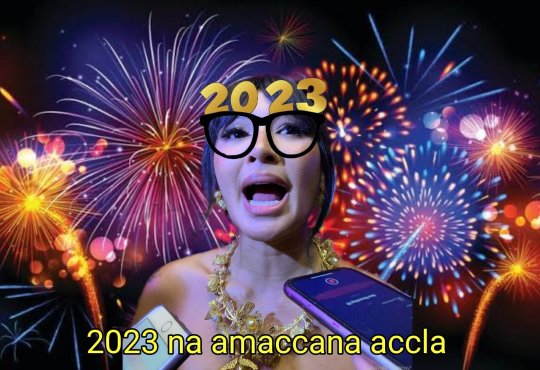
I hoped by now you understood how misogyny, misandry, and transphobia intersected. If the shoe happened to fit, let me also be the one to tell you: you don't have to keep it.
Go write down on a piece of paper everything you knew about girls vs. boys (how they should behave or not, what they should wear or not, whatever stereotypes you can think of). Then tear that paper into shreds. Or visualize in your head that gender is a balloon that you’ve simply let go to float away to the endless void beyond our skies (don’t actually do this in real life because those balloons would go somewhere, namely the stomachs of marine fauna).
Even if you picked up on the funny-because-it's-true adage that gender was a social construct, you should do whatever you could to unpack the centralization of the gender binary into how you lived your life and how you treated others. Even if this Hetalia bruhaha was all fiction at the end of the day, sometimes the diction utilized in explaining headcanons (not exclusive to gender identity, but far too often it toed that line) ended up implying that certain beliefs and mindsets were not just the status quo, but also a status quo not to be challenged.
I hated that. All the more as a queer Filipina myself, which not only shaped my life experience in this beautiful and damned archipelago but also in how I portrayed Piri.
☼ ☼ ☼
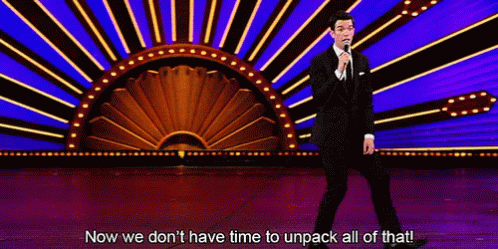
Well, you better, because I would rather you not proceed with reading the rest of this post until you did!
The good news was that we were coming up to the headcanon talk itself. Coming up because I felt that I would have to explain first the intricacies of SOGIESC in the Philippines before I could explain where I headcanon Piri to fit.
As I also shared way back up, it entailed shelving all Western notions in the meantime. In the hopes that I would make this easier to digest, we would follow a bottom-up approach of sorts.
Let's start with the all-too-familiar male/female (assigned) gender dichotomy. In Tagalog (and I would be primarily referencing Tagalog because it's my mother tongue): lalaki/babae.
Some of you might already be acquainted with the third gender bakla. A popular theory was that bakla was a compound word of the Tagalog terms babae and lalaki. Other local equivalents included bayot (Cebuano), agi (Akeanon, Hiligaynon), and bantut (Tausug).
In line with the Sikolohiyang Pilipino concept of the loob/labas dichotomy ("inner/outer behavior," colloquially speaking), the loob of the bakla was female while his labas was male.
Btw, the "o" sound in loob is like in "bob. You don't read loob like "boob."
A theory posited was that the bakla was, borrowing Eve Kosofsky Sedgwick's trope, the inverse of the lalaki. Was there an inverse for babae? Yes: tomboy. Acknowledging any unwitting ignorance, tomboy would be translated from Tagalog to tibo.
And so we have the four horsemen of the apocalpyse genders: lalaki/babae/bakla/tibo. Was this hierarchically arranged? At least a couple of scholars whose studies I read would argue so.
For headcanon purposes, our focus would be on the lalaki/bakla "binary."
SC: If my drawing him male-assigned tattoos and enough muscle to make him very masc-passing was not enough of a visual explanation, then yes, Piri was AMAB. May panlalaki na katawan siya, ngunit ano naman ang kasarian niya?
A bakla was, by all technicalities, an AMAB individual who exhibited effeminate behavior. I would argue that it was dissimilar from:
Genderfluid. Bakla was in itself a singular, unchanging identity.
Nonbinary. Bakla as an inversion was not as straightforward as equating it to being at least an extension of, if not completely separate from, the gender binary.
Bigender. A Tagalog equivalent for loob was kaluluwa ("soul;" sometimes translated as "psyche" but kaluluwa had a psychospiritual dimension). To translate bakla to a Western audience as being two "loobs" was self-contradictory.
Transgender. In a Philippine context, sexual orientation, or the object of sexual desire, was defined by the labas and not the loob. Arbitrarily speaking, a couple consisting of a trans woman and a cis man would be perceived as an (outwardly) heterosexual relationship, but if it were a bakla and a cis man, the relationship was homosexual. (A case study of an agi made explicit use of "transgendering" as a descriptive term, but this could also imply an additional linguistic difference.)
If it meant something, that last bit was acknowledged to be problematic in a study on Pinoy bisexuals. Bisexuals came in because, despite being a sexual orientation by Western definition, it had a place in the lalaki/bakla dichotomy. Even the latter contained its own masculine/feminine spectrum, such that the arrangement would be lalaki - bisexual - bakla / gay.
Yes, bakla and gay were interchangeable around these waters. Even if bakla were not necessarily exclusively homosexual AMABs, there were often stereotyped as such because of the sociocultural understanding of effeminacy.
A separate study published in 1995 revealed that an individual's sexual activity was not a direct reflection of their sexual orientation. Sexual relations between two bakla were viewed with contempt because they were, apparently, akin to a lesbian relationship. The penetrated one *coughs* the bottom was understood to be the feminine role in MSM (men having sex with men) relations. While not stated anywhere in the paper, it could be inferred that at least some participants acknowledged sex work as nothing more than work.
In that same study, many of the bakla participants expressed a preference for "straight" men; "hypermasculine" might be more apt by today's sensibilities. Hence, the bakla, as a female loob looking for a male loob partner, was understood to be gay (I would like to add that I had yet to encounter studies of "T4T" relationships between a bakla and a tibo).
Meanwhile, bisexual AMABs were typically stereotyped to fit the hypermasculine mold. There was also, unfortunately, the common (mis)conception that bisexual AMABs were just closeted gays; that was to say, bisexuality was a myth (yikes indeed). In the aforementioned study on Pinoy bisexuals — inferred via data extracted from user profiles on a certain dating site — there was a clear ostracization of the bakla as a (sexual) partner through the use of community lingo to express hiding all traces of effeminate behavior as a “requirement in a (sexual) partner.”
Put another way, these bisexuals expressed sexual interest only for more masc-passing AMABs. The choice of taking up the bisexual label, despite the lack of express sexual attraction for AFABs (within the study's sample size at least), was a tragic case of internalized homophobia and effeminophobia. Nonetheless, the author made it clear that the study aimed to set the initiative in challenging these problematic notions.
☼ ☼ ☼
Pardon the information overload! I hoped it would explain how I depicted Piri's struggle with his identity (In more ways than one? Absolutely.):
GIE: Aside from showing off art proof, if you asked me, I could see the token bakla mannerisms in some of the manga panels and sketches.





If audiovisual examples were of further help, let me share a few personal favorites: 01 (FB) || 02 (FB) || 03 (TWT).
Still, I wouldn't describe Piri as a "true-blue" effeminate bakla 24/7, although that part of him definitely "came out" more when he was in the company of people he trusted. ;) More specifically, he was a bakla capable of being discreet — a slang term for hiding your effeminacy. Alas, not even Amang Bayan was immune to social pressures — all the more when they literally shaped him.
As to the question of pronouns, I typically used he/him for Piri. Pronouns in the Philippine languages were gender-neutral — though I might be wrong in being ignorant of noteworthy exceptions!
By the time the Western language discourse reached his shores, Piri would shrug and admit that any pronouns would work just fine, but not without unconsciously re-enacting this meme first.

SO: In all honesty, Piri definitely had a strong preference for masc-leaning AMAB sex partners. Truth be told, he was gay (homosexual). He had his handful of girl crushes, but he would rather be the woman than do the woman. Still, he had his moments of "maybe I do like girls as well," so to play it safe, he would tell other people that he was bisexual. And if we were really going there, very well. Vers bottom.
When I also wrote up the talents & hobbies headcanon post, the vast majority of it had nothing to do with Piri's sex or gender. People were and should be allowed to enjoy things for the sake of it, and not because boys and girls are supposed to do this and that.
Something I really would like to depict in the precolonial arc: Indo was a major inspiration for Piri to explore his femininity — the product of brainrot that burst forth from encountering similar Indonesian gender identities. Yes, I drew Indo with a relatively more masculine body type than Piri, but let me tell you all that Piri upped his makeup game BECAUSE OF ABANG INDO. ✨ SLAY! ✨
☼ ☼ ☼
In defense of the conflation of bakla and gay, bacla was an Old Tagalog word for "confusion," "uncertainty," and "indecisiveness." Confusion was apt to describe the early colonial ethnographies of local shamans, written by the Spaniards that clutched on their evangelizing pearls in trying to make sense of the sexual activities of the natives on which they kept their tunnel vision. The established fact of their biased writings did little to prevent the retrospective interpretation that precolonial Philippines was an egalitarian society in gender discourse alone. Nevertheless, no meaningful PH queer studies would be achieved if the postcolonial and neocolonial power structures that introduced and/or sustained the gender binary as the status quo were never taken into account.
Despite the neocolonialist roots of national identity formation, anti-heteronormativity was an undeniable force of “anticolonial ‘national liberation’” that heeded the Fanonian thinking of “the nation [being] as much located in the past of a people struggling to bring itself into and keep itself in existence as it is in their present and, certainly, their future.” There was an "interesting overlap between postcolonial and anti-heteronormative discourses" in applying Judith Butler's theory of gender identity as performativity to national identity as well, to which Sedgwick proposed a habitation/nation system as the matrix within which national identities were negotiated. Coupled with Benedict Anderson's comment on treating nationalism "as if it belonged with 'kinship' and 'religion,'" it matched well with the inherently psychospiritual loob that constituted gender identity — and therefore national identity. To quote J. Neil C. Garcia, "we might say that being a Filipino is not what one is, but what one does."
While Sedgwick specialized in literary criticism, her theory’s cross-cutting into a sociological analysis conformed to the etymology (at far as Sedgwick was aware of it) of queer as transverse. I wish I could go further down the interdisciplinary inquiry, but I deadass semi-abandoned my academic obligations just to get this out into the online wild. In light of certain Twitter disk horse, a separate deep dive into the nuances of concepts adjacent to Pilipinohiya, Sikolohiyang Pilipino among them, was now in the cards.
Truth be told, this headcanon happened at all because — hopefully! — it would explain big time why I drew/wrote Piri the way I did (read: I'm obsessed with the conformity and subversion of roles). That and a sense of "indecisiveness" honestly defined numerous moments throughout Piri's history…
☼ ☼ ☼
Some Annotations
Because I do not want randos squaring up on me as if I uncritically subscribe to everything I read:
The most recent publication in the list of sources below was an anthology of studies published within a decade of assembling the book itself. It was intended to be an introduction to PH queer studies. Any later nuances developed since their initial, individual publication should be expected. Most existing PH queer studies were done by native Tagalog speakers, who therefore relied on the Tagalog-centric "Filipinizing" framework. The cited studies below on the bayot and the bantut — Visayas and Mindanao — were by white Americans educated in America. As of this post going up, Hart's study was published 55 years ago, while Johnson's was 28 years ago. Hart did not indicate if the quoted testimonies were his translations or if his interviewees had indeed spoken in English. Just as Butlerian performativity borrowed from earlier gender/sexuality studies built on biological anthropology ( a very...Western thing!!), so did Hart's emphasis on the testimonies that validated a hereditary basis to the bayot identity. Nonetheless, he concluded his study for further research to corroborate (or not) these statements.
Sources
Alcedo, Patrick. "Sacred Camp: Transgendering Faith in a Philippine Festival." In More Tomboy, More Bakla Than We Admit: Insights Into Sexual and Gender Diversity in Philippine Culture, History, and Politics, edited by Mark Blasius and Richard T. Chu, 303-337. Quezon City, Philippines: Vibal Foundation, Inc., 2021. Baytan, Ronald. "Crazy Planets: Notes on Filipino 'Bisexuals'" In More Tomboy, More Bakla Than We Admit: Insights Into Sexual and Gender Diversity in Philippine Culture, History, and Politics, edited by Mark Blasius and Richard T. Chu, 211-247. Quezon City, Philippines: Vibal Foundation, Inc., 2021. Garcia, J. Neil. “Performativity, the bakla and the orientalizing gaze.” Inter-Asia Cultural Studies 1, no. 2 (2000): 265–81. https://doi.org/10.1080/14649370050141140. —. "Knowledge, Sexuality, and the Nation-State." In Performing the Self: Occasional Prose, 3-15. Quezon City, Philippines: The University of the Philippines Press, 2003. —. “Philippine Gay Culture: An Update and a Postcolonial Autocritique.” In More Tomboy, More Bakla Than We Admit: Insights Into Sexual and Gender Diversity in Philippine Culture, History, and Politics, edited by Mark Blasius and Richard T. Chu, 53-91. Quezon City, Philippines: Vibal Foundation, Inc., 2021. Hart, Donn V. “Homosexuality and Transvestism in the Philippines: The Cebuan Filipino Bayot and Lakin-On.” Behavior Science Notes 3, no. 4 (November 1968): 211–48. https://doi.org/10.1177/106939716800300401. Johnson, Mark. “Transgender Men and Homosexuality in the Southern Philippines: Ethnicity, Political Violence and the Protocols of Engendered Sexualities amongst the Muslim Tausug and Sama.” South East Asia Research 3, no. 1 (1995): 46–66. https://doi.org/10.1177/0967828x9500300104. Sedgwick, Eve Kosofsky. "Nationalisms and Sexualities: As Opposed to What?" In Tendencies, 143-153. London: Routledge, 1994. Tan, Michael J. "From Bakla to Gay: Shifting Gender Identities and Sexual Behaviors in the Philippines." In More Tomboy, More Bakla Than We Admit: Insights Into Sexual and Gender Diversity in Philippine Culture, History, and Politics, edited by Mark Blasius and Richard T. Chu, 195-209. Quezon City, Philippines: Vibal Foundation, Inc., 2021.
5 notes
·
View notes
Text
Amritsar plot for sale | Experion

Golden opportunity in the city of the Golden Temple!
The beautiful city of Amritsar has a host of luxurious possibilities en route to Darbar Sahib where Experion Virsa is located. It is a grand 93 Acre (37.635 Hectare) of lush landscape and serene vistas offering the blend of tradition and modernity to its residents. Experion Virsa is crafted to represent the Punjabi culture, its rich heritage, and its philosophy of the external meets the internal through the symbolic reference of Miri and Piri at the Entrance Gate. The most marvellous property in Amritsar where residents get to embrace the outstanding privileges of world-class amenities, good connectivity to the major attractions as well as commercial hubs, public institutions such as school and healthcare, etc.
A lucrative township with all the luxuries of living a truly fulfilling life, Virsa is an iconic dreamscape for people looking to invest in properties. There are 5 main Chowks namely Raavi, Satluj, Beas, Chenab, and Jhelum named after the 5 rivers of Punjab also representing the significance of the holy number of 5. The Chowks are planned based on the vernacular village patterns to foster connection and the spirit of togetherness during festivities.
The property has a wide-ranging array of amenities including beautiful walkways for morning or evening strolls, a Gazebo, Amphitheatre, Multi-purpose Court for Sports and recreational activities, Kids’ Play Area, surrounded by ample greenery and breezy calmness. This property for sale in Amritsar is a terrific investment for people who want to embrace the integration of culture and worldliness and live a holistic lifestyle that feels rewarding in all aspects of life.
You can build the home of your dreams to accommodate your family and the upcoming generation or to enjoy the same as a vacation home far from the hustle and bustle of the city. The picturesque landscape with natural light and clean air, the view to wake up to, and the atmosphere of state-of-the-art privileges makes it an unmissable property in Amritsar worthy of investment at a time when the world is looking to have a space of comfort and luxury away from the clutter and noise of city life flooded with pollution and stressful living.
Enjoy the balance of incredible bliss at Experion Virsa and discover the joy of living a hustle-free and harmonious life.
1 note
·
View note
Text
Exeter Places to Eat: Top Dining Destinations
Exeter, a historic city nestled in the heart of Devon, is a haven for food lovers. From traditional British cuisine to exotic international dishes, Exeter Places to Eat the city offers a wide array of culinary delights. Whether you’re a local or a visitor, exploring the diverse food scene is a must. Here’s a guide to some of the best places to eat in Exeter.
1. Herbies Restaurant
Herbies Restaurant is a beloved gem in Exeter, especially for vegetarians and vegans. Located in the vibrant city center, Herbies has been serving delicious, wholesome, and creative vegetarian meals for over two decades. From hearty stews and savory pies to fresh salads and indulgent desserts, the menu is packed with options that even non-vegetarians will enjoy. The relaxed, friendly atmosphere makes it a perfect spot for a casual meal with friends or family.
Specialties:
Freshly made soups
Delicious vegan and gluten-free options
Sumptuous desserts, like the famous vegan chocolate cake
2. The Conservatory
Located on North Street, The Conservatory is a charming and cozy restaurant that offers a mix of British and European cuisine. With a seasonal menu that focuses on locally sourced ingredients, every dish is prepared with care and creativity. The restaurant is housed in a beautiful 18th-century building, adding to the charm of the dining experience. It’s perfect for a romantic dinner or a special occasion.
Must-try dishes:
Fillet of Devon Beef
Sea Bream with citrus sauce
Crème brûlée
3. Harry’s Restaurant
Another iconic eatery in Exeter, Harry’s Restaurant is known for its warm and welcoming atmosphere. This family-run restaurant offers a menu that blends modern British fare with international influences. The extensive menu features everything from juicy burgers to fresh seafood and vegetarian-friendly options.
Noteworthy dishes:
Harry’s Ultimate Burger
Grilled Swordfish
Veggie Stack
4. The Old Firehouse
A favorite among students and locals alike, The Old Firehouse offers hearty food, excellent drinks, and a lively atmosphere. Famous for its gigantic pizzas, it’s the perfect place to grab a bite with friends over a pint of local ale. Its cozy, rustic vibe adds to the charm, making it a great spot to unwind after a long day.
Highlights:
Massive pizzas (served until late)
Selection of local ciders and ales
Lively weekend atmosphere
5. On The Waterfront
Located on Exeter’s historic quay, On The Waterfront is the go-to place for those looking to enjoy a meal with a view. The restaurant is known for its delicious pizzas, but it also offers a variety of dishes, including seafood, salads, and tapas. The outdoor seating area is perfect for sunny days, offering views of the River Exe.
Top picks:
Waterfront Pizza (with a choice of gluten-free bases)
Devon Crab Cakes
Piri-Piri Chicken Skewers
6. Café Catalan
For a taste of Spain in the heart of Exeter, Café Catalan offers an authentic tapas experience. This charming café is perfect for those who want to share small plates of Spanish delights, such as chorizo, gambas al ajillo, and patatas bravas. With its friendly service and intimate atmosphere, it’s a wonderful spot for a laid-back evening.
Popular tapas:
Patatas Bravas
Calamari
Albondigas (Spanish meatballs)
7. Rendezvous Wine Bar
If you're a fan of fine wine and gourmet food, the Rendezvous Wine Bar in Exeter is a must-visit. Nestled away in an old cellar, this wine bar offers an extensive list of wines from around the world and a menu that’s equally impressive. The dishes are made from locally sourced ingredients, ensuring fresh and flavorful meals.
Recommendations:
Devon Lamb Rump
Free-range Pork Belly
Artisan Cheese Board
Conclusion
Exeter’s culinary landscape is rich and varied, offering something for everyone, whether you're in the mood for a light snack or a full-course meal. Exeter Places to Eat From the health-conscious offerings at Herbies Restaurant to the hearty, traditional meals at The Old Firehouse, the city's food scene reflects its vibrant culture and local produce.
For a truly memorable dining experience, these places are just the tip of the iceberg. With a growing list of independent restaurants and cafés, Exeter is a food lover’s dream waiting to be explored.
0 notes
Text
The Sizzle and Spice of Grilled Chicken: Exploring 8 Famous Grilled Chicken Dishes

Grilled chicken is a culinary delight that spans the globe, celebrated for its versatility, flavor, and the unique touch that grilling imparts. From the smoky flavors of American BBQ to the aromatic spices of the Middle East, grilled chicken dishes are a staple in many cuisines. Let's embark on a journey to explore eight of the most famous grilled chicken dishes from around the world, each offering a distinct taste and cultural experience.
1. Tandoori Chicken (India)
Origins and Popularity:
Tandoori Chicken is a quintessential dish in Indian cuisine, originating from the Punjab region. The dish is named after the tandoor, a traditional clay oven used for cooking. Its popularity has spread worldwide, making it a favorite in Indian restaurants globally.
Ingredients:
Chicken pieces (often legs and thighs)
Yogurt
Garlic and ginger paste
Lemon juice
Spices (cumin, coriander, turmeric, garam masala, cayenne pepper)
Red food coloring (optional, for the iconic red hue)
Preparation:
The chicken is marinated in a mixture of yogurt, lemon juice, garlic, ginger, and a blend of spices, which tenderizes the meat and infuses it with flavor. It is then traditionally cooked in a tandoor at high temperatures, giving it a unique smoky flavor and charred exterior. In home kitchens, grilling or baking can achieve similar results.
Cultural Significance:
Tandoori Chicken is often served as an appetizer or main course, accompanied by naan bread and chutneys. It is a dish that showcases the rich, aromatic spices of Indian cuisine and the art of marination and grilling.
Credit: Al-Baik: Best Non veg restaurant in Lucknow
2. Shish Taouk (Middle East)
Origins and Popularity:
Shish Taouk, a popular dish in Lebanese, Turkish, and Syrian cuisines, translates to "skewered chicken." It is a beloved street food and a staple in Middle Eastern households.
Ingredients:
Chicken breast or thigh pieces
Yogurt
Lemon juice
Garlic
Paprika
Olive oil
Salt and pepper
Preparation:
Chicken pieces are marinated in a mixture of yogurt, lemon juice, garlic, and spices, then skewered and grilled to perfection. The yogurt tenderizes the meat while the spices and lemon juice infuse it with a vibrant flavor. It is typically served with pita bread, garlic sauce (toum), and fresh vegetables.
Cultural Significance:
Shish Taouk is a versatile dish, enjoyed in wraps, on plates, or as part of a mezze platter. It reflects the Middle Eastern love for grilled meats and the communal dining experience.
3. Yakitori (Japan)
Origins and Popularity:
Yakitori is a traditional Japanese dish that translates to "grilled bird." It is a popular street food and izakaya (Japanese pub) staple, where skewered chicken pieces are grilled over charcoal.
Ingredients:
Chicken pieces (various cuts, including thighs, wings, and liver)
Salt or tare sauce (a sweet soy-based glaze)
Scallions (optional)
Preparation:
Chicken pieces are skewered and grilled over high heat. They can be seasoned with salt or basted with tare sauce, which caramelizes on the grill, adding a sweet and savory glaze. Yakitori is often enjoyed with a side of rice or as a snack with drinks.
Cultural Significance:
Yakitori is synonymous with Japanese casual dining and nightlife. It's enjoyed in small, bustling yakitori-ya (grill shops) or as a quick snack from street vendors. The simplicity of the dish highlights the purity of the ingredients and the skill in grilling.
4. Peri-Peri Chicken (Portugal/Mozambique)
Origins and Popularity:
Peri-Peri Chicken, also known as Piri-Piri Chicken, has its roots in the Portuguese colonization of Mozambique, where the local bird's eye chili (piri-piri) was introduced to Portuguese settlers. This dish is now a staple in Portuguese and African cuisines, particularly in Mozambique and Angola.
Ingredients:
Chicken pieces
Peri-peri sauce (made from bird's eye chilies, garlic, lemon, vinegar, and paprika)
Olive oil
Preparation:
The chicken is marinated in a fiery peri-peri sauce, which combines the heat of bird's eye chilies with the tanginess of lemon and the smokiness of paprika. It is then grilled until the skin is crispy and charred. The result is a dish that is both spicy and flavorful, often served with rice or potatoes.
Cultural Significance:
Peri-Peri Chicken represents a fusion of Portuguese and African flavors. It is a dish that celebrates the boldness of chilies and the joy of communal eating, often enjoyed at family gatherings and festive occasions.
5. Pollo Asado (Latin America)
Origins and Popularity:
Pollo Asado, meaning "roasted chicken" in Spanish, is a popular dish throughout Latin America, especially in Mexico and Central America. It is known for its vibrant flavors and simplicity.
Ingredients:
Chicken pieces
Citrus juices (lime, orange)
Garlic
Cumin
Paprika
Oregano
Olive oil
Preparation:
The chicken is marinated in a mixture of citrus juices, garlic, and spices, giving it a bright, zesty flavor. It is then grilled or roasted until the skin is crispy and the meat is tender. Pollo Asado is typically served with rice, beans, and tortillas.
Cultural Significance:
Pollo Asado is a staple at family barbecues and street food stalls across Latin America. Its simple yet flavorful preparation makes it a favorite for both everyday meals and special occasions.
6. Barbecue Chicken (USA)
Origins and Popularity:
Barbecue Chicken is a classic American dish, particularly popular in the Southern United States. It is a staple of summer cookouts and barbecue joints, known for its smoky, tangy flavor.
Ingredients:
Chicken pieces
Barbecue sauce (a blend of ketchup, vinegar, brown sugar, and spices)
Dry rub (optional, with paprika, garlic powder, and brown sugar)
Preparation:
Chicken is often seasoned with a dry rub before being slow-cooked on a grill or smoker. It is then basted with barbecue sauce during the last stages of cooking, allowing the sauce to caramelize and create a sticky, flavorful glaze. The result is tender, smoky chicken with a balance of sweetness and tang.
Cultural Significance:
Barbecue Chicken is a quintessential part of American barbecue culture, enjoyed at backyard gatherings, festivals, and restaurants. It represents the tradition of slow-cooked meats and the regional diversity of barbecue sauces and styles.
7. Chicken Satay (Southeast Asia)
Origins and Popularity:
Chicken Satay is a popular dish in Southeast Asia, particularly in Indonesia, Malaysia, and Thailand. It consists of skewered, marinated chicken pieces grilled over an open flame and served with a flavorful peanut sauce.
Ingredients:
Chicken pieces
Marinade (coconut milk, turmeric, garlic, coriander, and lemongrass)
Peanut sauce (made with peanuts, soy sauce, lime, and chili)
Preparation:
The chicken is marinated in a fragrant mixture of coconut milk and spices, then skewered and grilled until charred and juicy. The peanut sauce, rich and slightly spicy, complements the grilled chicken perfectly. Satay is typically served with rice cakes or as a part of a larger meal.
Cultural Significance:
Chicken Satay is a beloved street food and a staple at festivals and celebrations across Southeast Asia. It showcases the region's love for bold flavors and the art of grilling.
8. Jerk Chicken (Jamaica)
Origins and Popularity:
Jerk Chicken is a cornerstone of Jamaican cuisine, known for its fiery, aromatic seasoning and smoky flavor. The term "jerk" refers to a method of seasoning and cooking that originated with the Maroons, enslaved Africans who escaped to the mountains of Jamaica.
Ingredients:
Chicken pieces
Jerk seasoning (a blend of allspice, Scotch bonnet peppers, thyme, garlic, and scallions)
Pimento wood (optional, for authentic smoking)
Preparation:
The chicken is marinated in a potent jerk seasoning, which combines the heat of Scotch bonnet peppers with the warmth of allspice and the earthiness of thyme. It is then traditionally smoked over pimento wood, imparting a distinctive smoky flavor. In modern kitchens, grilling or baking can also be used.
Cultural Significance:
Jerk Chicken is a symbol of Jamaican culture and resilience, representing the fusion of African and indigenous flavors and cooking techniques. It is enjoyed at street food stalls, family gatherings, and festivals, often accompanied by rice and peas or festival (a type of fried dough).
Conclusion
Grilled chicken dishes are a testament to the universal appeal of combining fire and food. Each dish, from the spicy Peri-Peri Chicken to the smoky Jerk Chicken, tells a story of regional flavors, culinary traditions, and the joy of grilling. These eight famous grilled chicken dishes offer a delicious glimpse into the world of global cuisine, inviting us to savor the diverse tastes and aromas that come from the grill. Whether you're enjoying Tandoori Chicken in India or Yakitori in Japan, grilled chicken is a culinary journey that transcends borders and brings people together over the simple pleasure of good food.
1 note
·
View note
Text
Discover the Heart of Africa in Glasgow: A Culinary Journey at Afrikana Restaurant
When you think of Glasgow, images of historic architecture, vibrant arts, and a lively cultural scene come to mind. But nestled in the heart of this Scottish city is a gem that brings a taste of Africa to the locals and visitors alike — Afrikana Restaurant.
A Taste of Africa in the Heart of Glasgow
Afrikana Restaurant offers a unique dining experience that fuses traditional African flavors with modern culinary techniques. Located in the bustling neighborhood of Buchanan Street Afrikana stands out not just for its food but for its ambiance, hospitality, and commitment to authenticity.

What Makes Afrikana Special?
Authentic African Cuisine: Afrikana’s menu is a celebration of African diversity. From the spicy Jollof rice of West Africa to the rich and flavorful curries of East Africa, each dish is prepared with care, using ingredients that are true to their origins. Whether you’re craving a hearty Bobotie, a traditional South African meat dish, or the succulent Suya, a spiced Nigerian kebab, Afrikana promises a culinary journey across the continent.
Aesthetic Ambiance: The restaurant’s decor reflects the vibrant and colorful spirit of Africa. With earthy tones, tribal patterns, and artifacts that tell stories of African heritage, the setting at Afrikana is as much a part of the experience as the food itself. The cozy, warm lighting and friendly staff create an inviting atmosphere that makes you feel right at home.
Cultural Immersion: Afrikana is not just about food; it's about celebrating African culture. The restaurant often hosts live music events, featuring genres like Afrobeats and traditional drumming, which add to the immersive dining experience. You might also find art exhibitions or cultural performances that provide a deeper understanding of the diverse African traditions.
Innovative Fusion Dishes: While Afrikana stays true to traditional recipes, it also offers a twist with its fusion dishes. These creations blend African flavors with international influences, creating unique and tantalizing options for the adventurous palate. Imagine a burger with African spices or a pasta dish infused with rich, earthy flavors from the continent.
Catering to All Diets: Afrikana caters to a wide range of dietary preferences and restrictions. Whether you're vegan, vegetarian, or gluten-free, you’ll find plenty of options that do not compromise on flavor or authenticity. The chefs at Afrikana take pride in ensuring that everyone can enjoy a hearty meal that aligns with their dietary needs.

Signature Dishes You Must Try
Piri Piri Chicken: This iconic dish, marinated in a blend of African spices and grilled to perfection, is a must-try. Served with a side of spicy rice or creamy mash, it's a perfect balance of heat and flavor.
African Peanut Stew: A rich and creamy stew made with ground peanuts, sweet potatoes, and a blend of spices. It’s a comforting dish that is both hearty and satisfying.
Cape Malay Curry: A fragrant curry with a hint of sweetness, the Cape Malay Curry is a beautiful representation of South Africa’s culinary history. Served with fluffy rice and a side of sambals, it’s a dish that warms the soul.
Jollof Rice: This West African favorite, cooked with tomatoes, onions, and a blend of spices, is a flavorful dish that pairs perfectly with grilled meats or vegetables.
Malva Pudding: End your meal on a sweet note with this traditional South African dessert. The spongy cake soaked in a warm caramel sauce is served with a scoop of vanilla ice cream, offering a delightful conclusion to your culinary adventure.
Perfect for Every Occasion
Afrikana is more than just a restaurant; it's a venue for celebrations and gatherings. Whether you’re planning a birthday dinner, a family reunion, or a romantic date night, Afrikana provides the perfect setting. The spacious interior and friendly atmosphere make it ideal for both small and large groups.
For those who prefer to enjoy Afrikana’s offerings at home, the restaurant also provides an efficient takeaway service. You can savor the flavors of Africa from the comfort of your own dining table.
Visit Afrikana Restaurant Today
If you’re in Glasgow and looking to explore new culinary horizons, Afrikana Restaurant is a must-visit. With its commitment to authenticity, innovative menu, and welcoming ambiance, Afrikana promises a dining experience that you won’t soon forget.
So, come and discover the rich and diverse flavors of Africa at Afrikana Restaurant. It’s more than just a meal; it’s a journey into the heart of a continent known for its vibrant culture and delicious cuisine.
0 notes
Text
Compared to the day before today‘s drive to Chimoio in Mozambique was a piece of cake. Roads were without any potholes and sometimes even a four lane highway. Traffic was not too heavy so that we covered those 370 km relatively fast.
The lunch stop was at a place called „La Rochelle“.
„La Rochelle is a newly re-opened Country House in Penhalonga, near Mutare. It was renowned in the 1950s and 60s for Sir Stephen and Lady Virginia Courtauld’s lavish and warm hospitality and has long been recognised as one of the most celebrated botanical gardens in Zimbabwe as well as an icon of the Art Deco movement. La Rochelle is a place of beauty for Zimbabweans to treasure, a heritage the Courtaulds wanted to share with everyone.“
From there it was just a few kilometers to the border. We are becoming experts in crossing them jumping from window to window. Usually if the officials know what they are doing it involves the following steps:
Country-out:
* Passport control - make sure they don’t forget the exit stamp
* Gate pass - a piece of paper stamped by every official
* Carnet de passage - they have to extract the export slip and stamp the remaining stump to proof the car has left the country
* Drive to gate and present gate pass together with passport and car registration
* Bribe official with USD 3,- to 5,- if asked for lunch money or drinks
* Drive to the other side and pass through all trucks blocking the road
Country -in:
* Find a parking in the shade - lock the car and don’t hand the Carnet de passage to any foreigner claiming to be the official agent
* Pay USD 1,- to 2,- to local guy hanging around to watch the car - pay only when coming back to the car or he is gone
* Fill out entry forms
* Passport control and payment of entry tax - don’t forget the receipts or you will be sent back later in the process
* Customs form and Carnet de Passage - make sure the official knows what he is doing. If not refer him to the internet with pictures explaining the process. Make sure he takes the import slip and confirms the entry with a stamp! Don’t try to find out why he enters every car detail from the Carnet by hand in a ledger no one will ever take a look again and then transfers the exact same information into a computer that breaks down every 10 minutes. It is Africa!
* Go to next window to pay the road tax - make sure to have the exact amount in cash otherwise it might happen they keep the change. Don’t forget the receipt or you come back
* Gate pass with stamps from every section - if not you come back
* Drive up to the gate and see above for bribes
Always try to stay calm! It doesn’t help if you loose it! It only slows down a process which can take something between 1 to 3 hours or more (Nepalese Indian border in 2018 was 6 hours).
On our drive from the border to Chimoio we were held up by the police who wanted us to line up all the cars and drive into the city with a police escort. The 3 star general did not want to understand that this was a bad idea. Waiting in the sun for all 25 cars would have taken at least 3 hours. We then persuaded them to at least let us wait at the next fuel station. He agreed and we took off leaving the police car behind at the fuel station.
Chimoio is a shithole and so is the hotel. They would not let us park inside the compound so Len just shoved the plastic cone to the side and we parked right up front. Other cars followed until the parking was full.
The evening ended in the bar. They served us „Piri piri chicken“ which was excellent.
Best
L&C
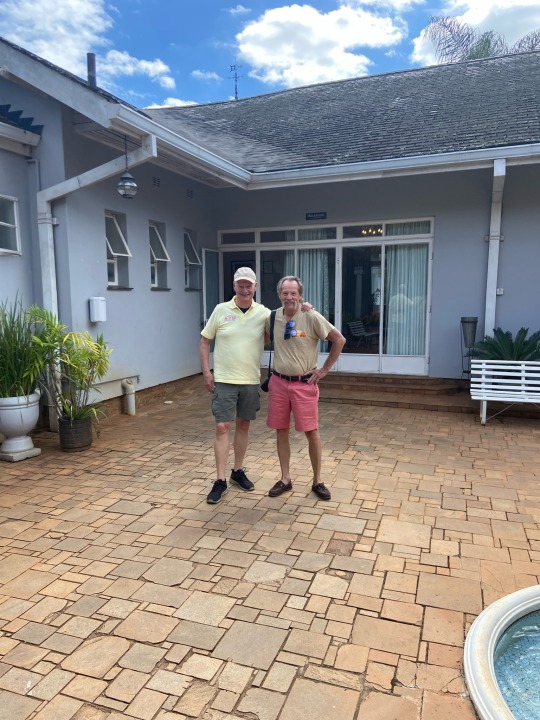
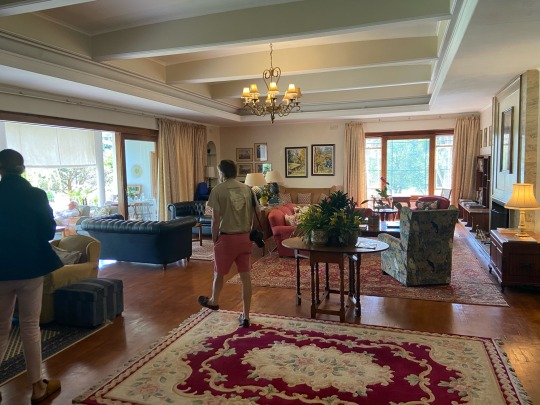
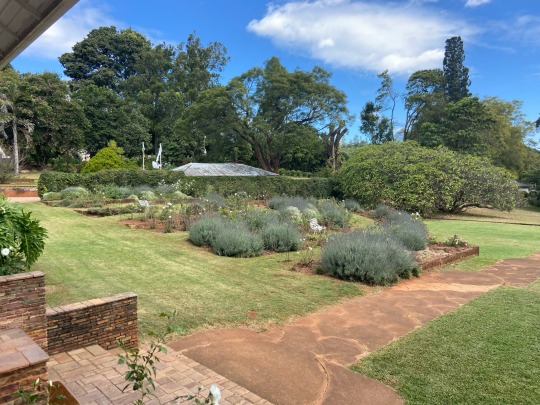
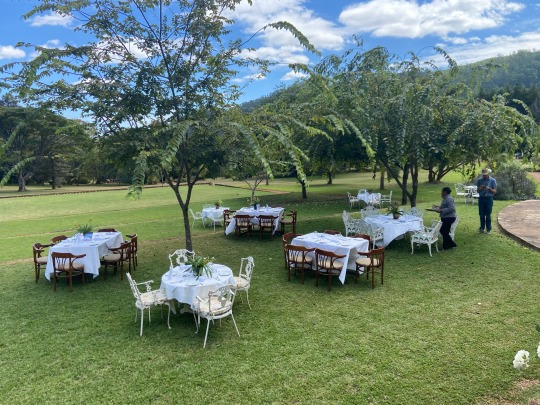
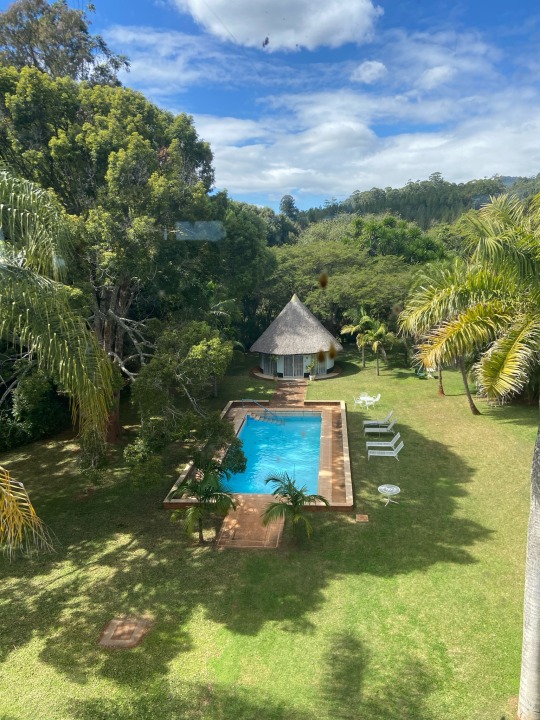



1 note
·
View note








